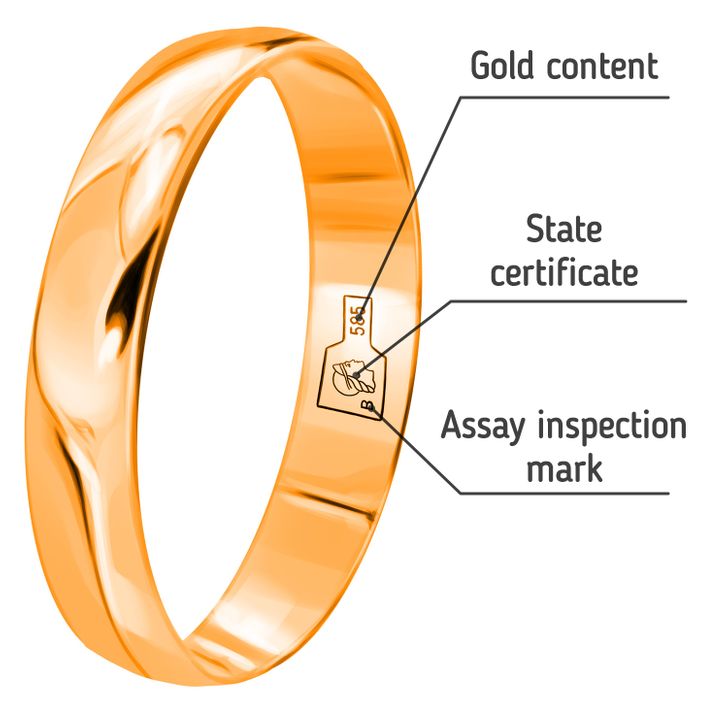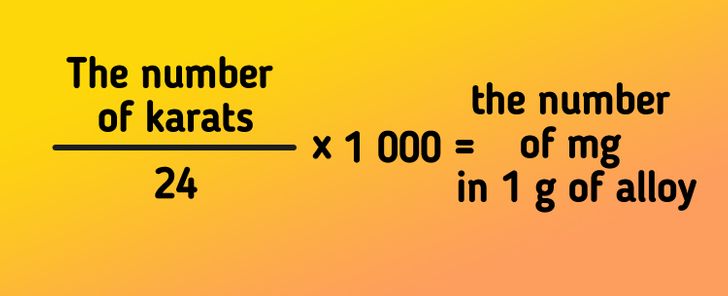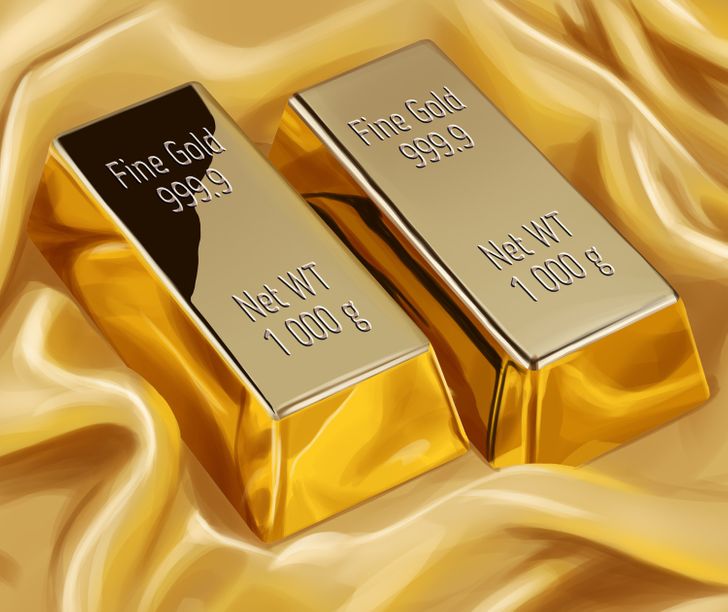What Types of Gold Hallmarks Exist, and How to Distinguish Them
That slightly noticeable mark on pieces of jewelry is a hallmark that is stamped in state assay offices after examining the composition of the metal. The manufacturer also stamps their own maker’s mark. The state mark says what proportion of the basic precious metal the tested alloy has.
5-Minute Crafts is going to explain everything in detail.

There are 2 main systems of precious metal hallmarks in the world:
- Metric
- Karat
The metric system shows how many milligrams of the main metal 1 g of alloy contains. That is, if a piece of jewelry has the “585” sign on it, it means 1 g of this alloy contains 585 milligrams of gold (or 58.5% of gold).
The lowest hallmark is “375” — it has 37.5% of gold. It is followed by the hallmark, “500.” The most common one is “585,” and it has the optimal ratio of price and quality. The highest and most expensive one is “999.”

The karat system is known from the times of the Roman Empire. Initially, it was carob tree pods that were called karats. They served as a measurement of weight. One karat is 0.2 g or 200 milligrams.
Today, the karat system is used in the USA. In Great Britain, jewelry itself might have a metric hallmark, and the indicators in karats are added in the description.
The unit of pure gold is 24 karats. Therefore, 1 karat is 1/24 part of the whole. Thus, an item of 12 karats consists of half-gold and half-additives, while an 18-karat item will have 75% of gold (18/24), etc.

There’s a reason why the “999” hallmark for gold is not used on jewelry. Gold (or aurum) is a very soft and fragile metal, and that’s why refractory metals known as ligatures are added to it. Keep in mind that low-grade jewelry quickly loses its shiny appearance and sometimes irritates the skin.
The color of a golden piece of jewelry depends on the proportion of certain metals in the alloy. For example, copper dissolved in gold changes its color from yellow-gold to red-gold. Silver dissolved in gold produces a greenish-gold hue. White gold contains palladium and silver.
Gold is such a plastic material that it can be turned into the thinnest (less than 100 nanometers) sheets, or gold leaf, which acquires a bluish-green color when transmitted by light.
Bonus: If you see a piece of jewelry with the “925” hallmark, know that it’s not a mistake and it’s not a fake, but rather, a gold-plated silver: the hallmark is stamped according to the main metal in the jewelry item.